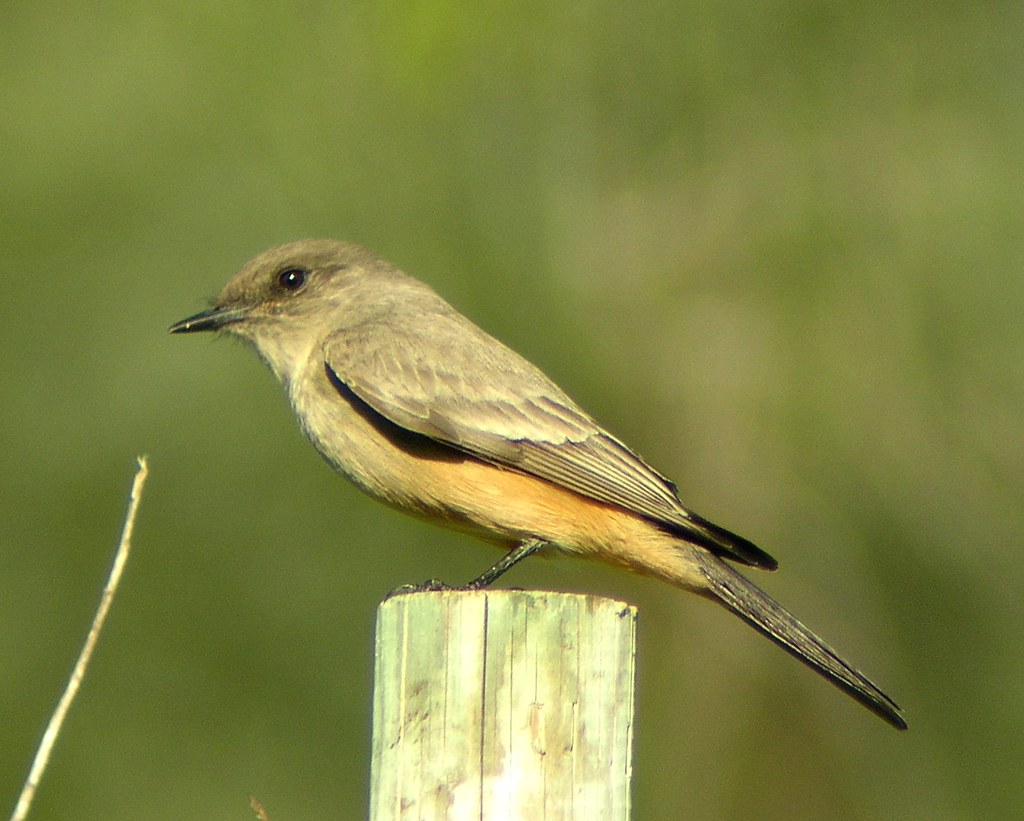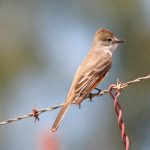Say’s Phoebe (Sayornis saya) is a fascinating bird native to North America, particularly prevalent in Arizona. Named after the American naturalist Thomas Say, this bird is known for its adaptability to dry and desolate environments.
Quick Facts
- Scientific Name: Sayornis saya
- Family: Tyrannidae (Tyrant Flycatchers)
- Conservation Status: Least Concern (IUCN 3.1)
- Common Locations: Arizona, Western Canada, Alaska
Subspecies Details
There are two recognized subspecies of Say’s Phoebe:
- S. s. saya – Found from Alaska through western Canada and the western United States down to southern Mexico.
- S. s. quiescens – Located in Baja California, northwest Mexico.
Size and Dimensions
- Length: Approximately 7.5 inches (19 cm)
- Wingspan: Roughly 13 inches (33 cm)
- Weight: Around 0.75 ounces (21 grams)
Appearance and Features
Say’s Phoebe has a barrel-chested body with a squared-off head:
- Upperparts are gray-brown with a black tail.
- Underparts are buffy cinnamon, becoming more near the vent.
- Juveniles resemble adults but have buffy orange to whitish wingbars and a yellow gape.
Both males and females look similar; however, males might engage more frequently in singing displays.
Habitat Preferences
This species thrives in dry, arid landscapes such as:
- Deserts
- Farmlands
- Savannas In Arizona can be spotted near open woodlands close to water sources.
Diet and Eating Habits
Say’s Phoebe primarily feeds on insects like grasshoppers, flies, crickets, beetles, and bees: They catch their prey midair or pounce on them while they’re grounded. Occasionally seen eating small fish or berries.
Migration Patterns
These birds migrate between breeding grounds in northern regions like Alaska down to wintering areas in southern Texas and Mexico: During migration seasons, they may appear far out of their usual range—sometimes as far as New England.
Conservation Status and Threats
Currently listed as Least Concern by IUCN: Their population remains stable due to their adaptability to various habitats despite potential threats from habitat destruction or climate change.


